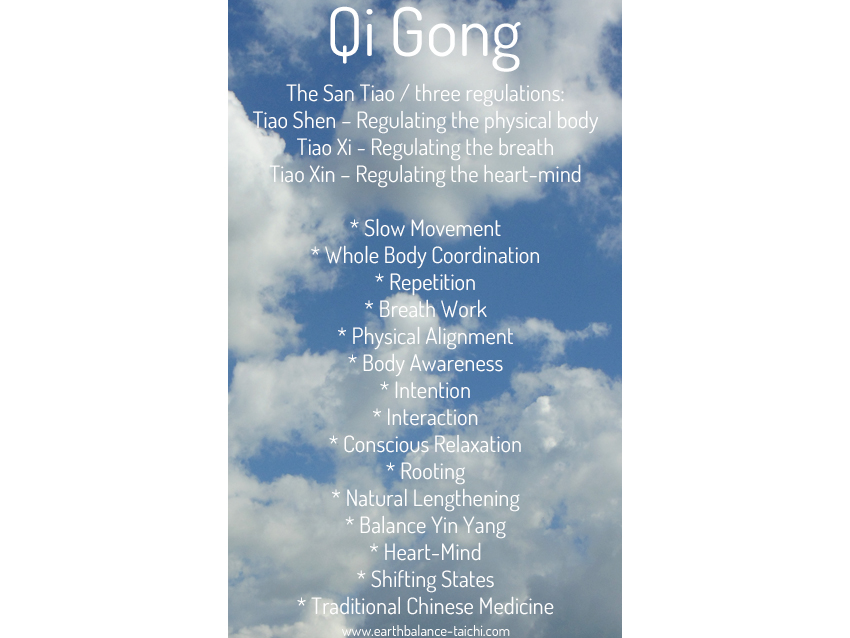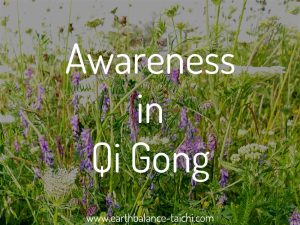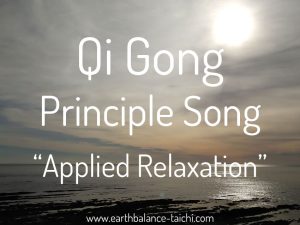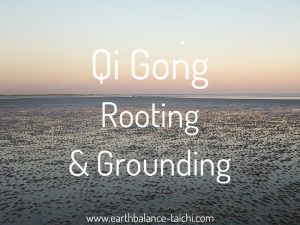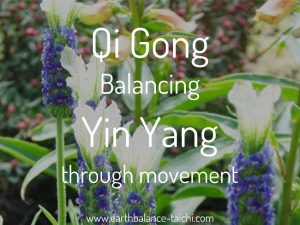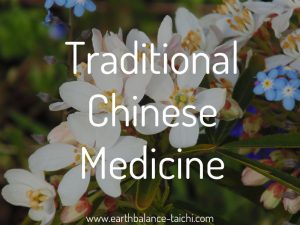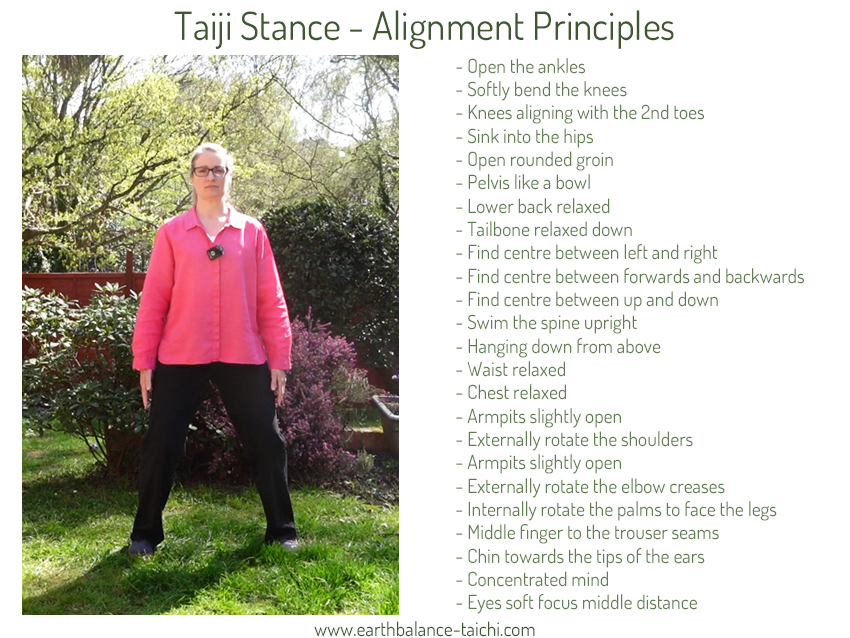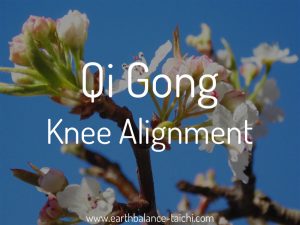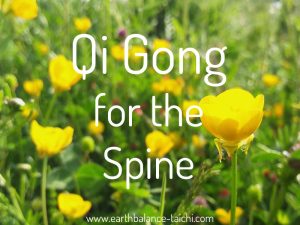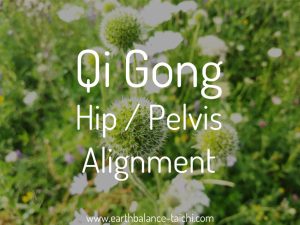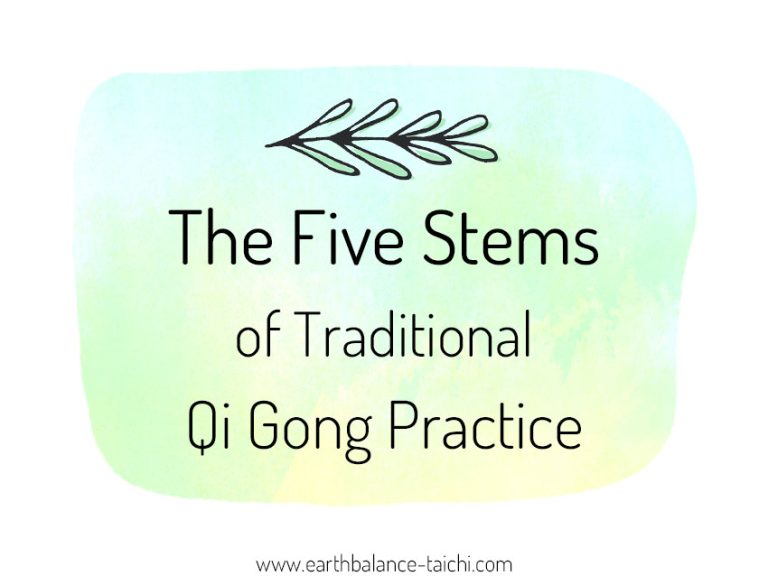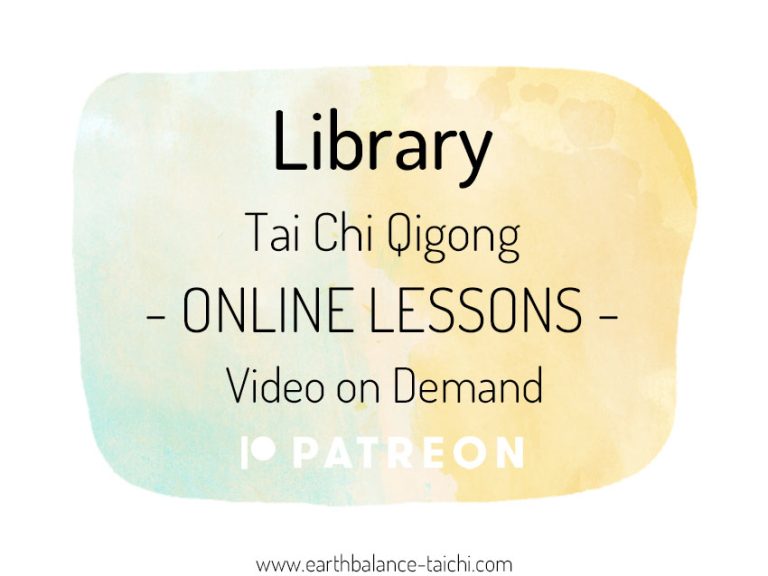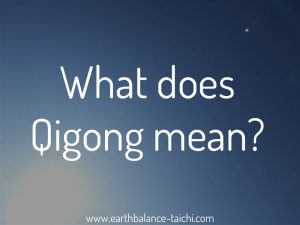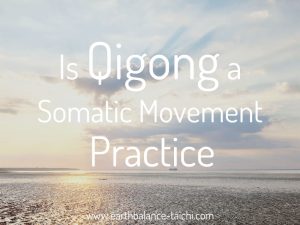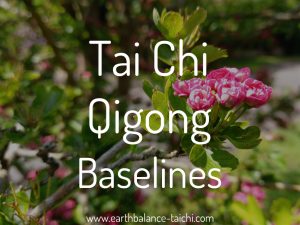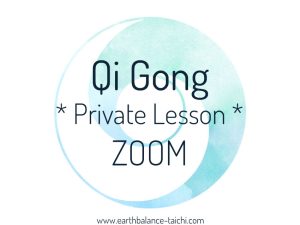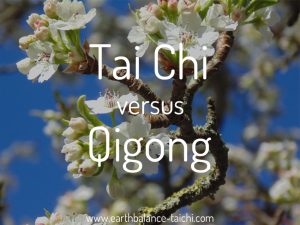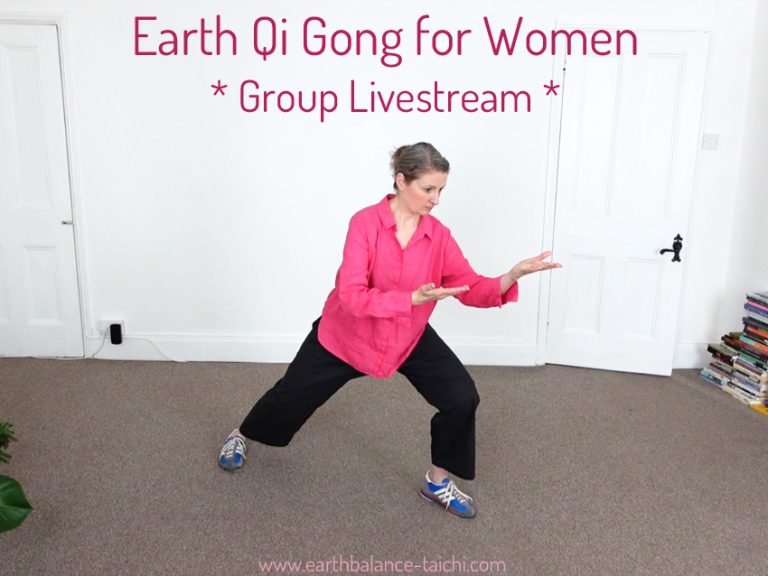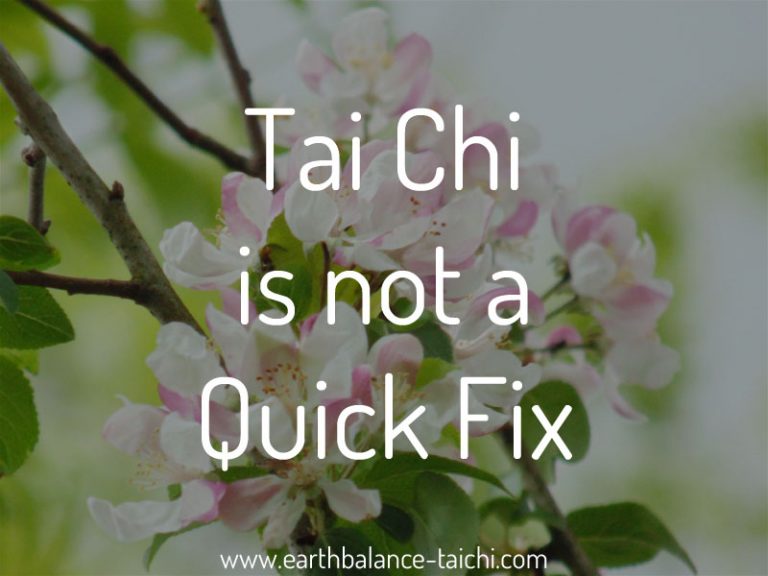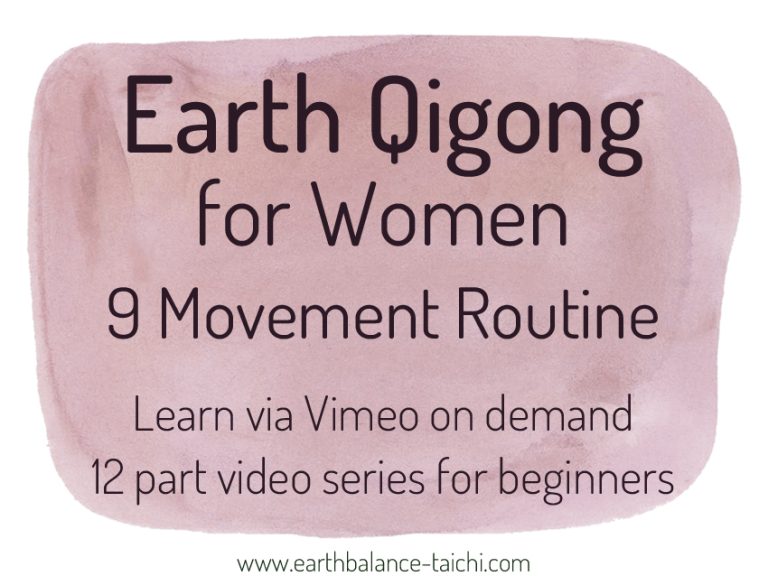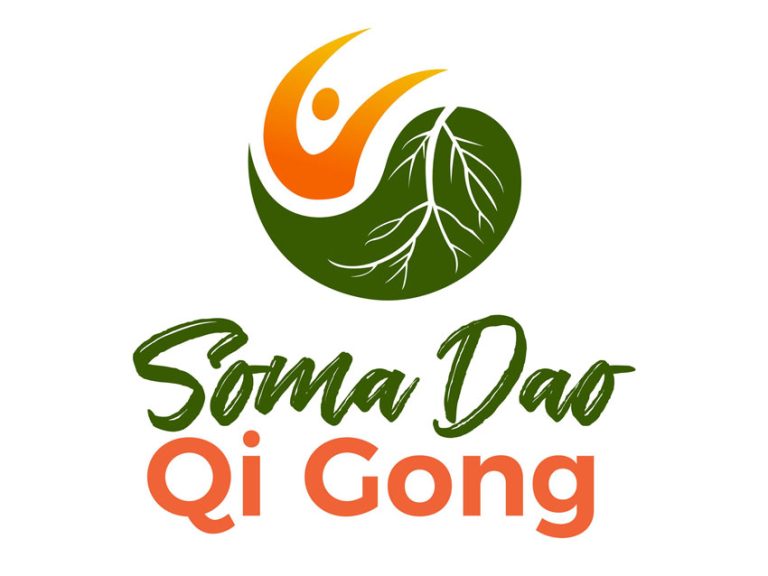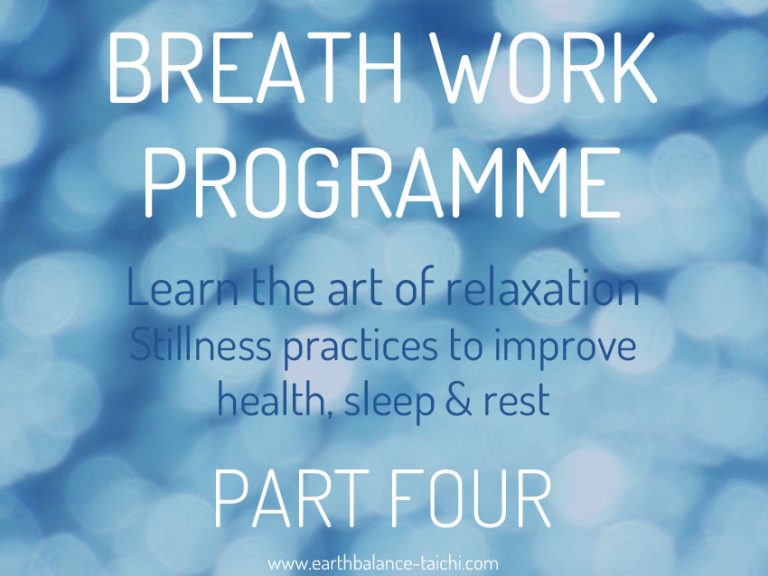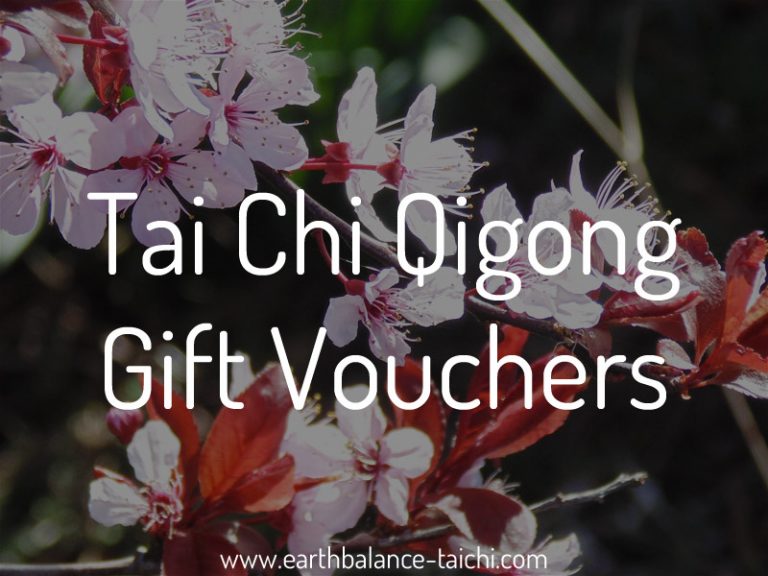Qi Gong Principles
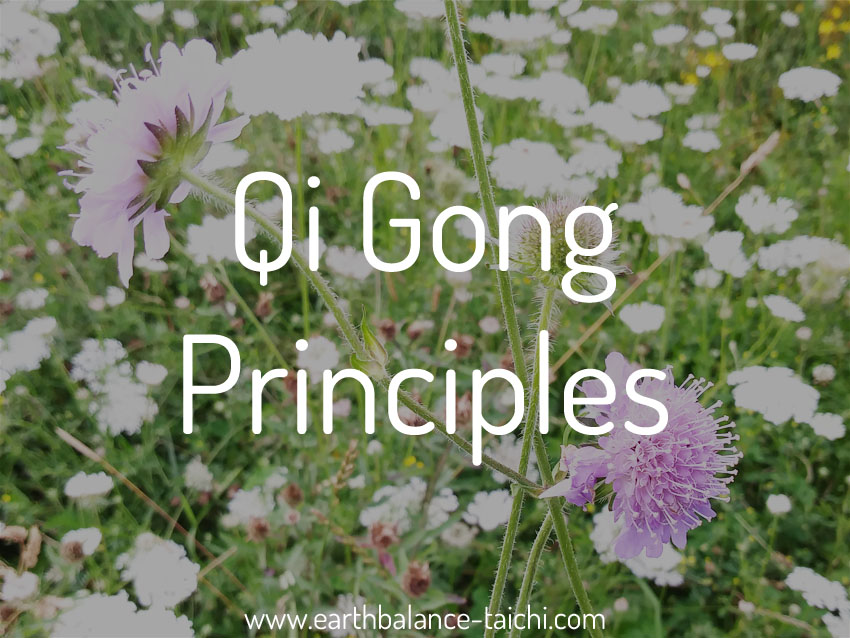
Qi Gong Principles
What Are The Key Concepts in Training
Qi Gong is a term from the 1960s, historically known as Dao Yin. It is an ancient Chinese health preservation system dated 4-6000 years ago. Active Qi Gong is the widely known physical exercise system that is typically performed standing up or seated. Passive Qi Gong is found in stillness, when standing, seated or lying down as meditation system. This article will explore Qi Gong principles in movement and stillness.
What is the difference between Tai Chi and Qi Gong as movement arts?
Qi Gong is the original practice combining a well aligned posture, slow movements, awareness, breath work and state shifting. Qigong movements start with a well aligned, rooted and relaxed standing posture, moving into key postures and returning to the neutral standing posture. As a new beginner Qigong is usually easier than Tai Chi to learn as the routines are shorter and each move is repeated on both sides of the body a number of times. There are three key concepts in Qi Gong practice, called the San Tiao or three regulations.
- Tiao Shen – Regulating the physical body
- Tiao Xi - Regulating the breath
- Tiao Xin – Regulating the heart-mind
Qigong is the mother of Tai Chi. Tai Chi is a much younger practice from circa 400 years ago that uses the principles of Qi Gong as the foundation for a martial art. Tai Chi movements uses Qi Gong principles as the base body method, with a focus on martial arts. Generally the Tai Chi range of motion is smaller than with Qigong, to maintain a well aligned and resilient structure throughout the form. Where you are able to absorb, redirect, ground and deflect strength or power coming into your structure. Tai Chi is more difficult and complex to learn, as you learn a choreographed form, like a dance routine.
Qi Gong Principles - Core Skills
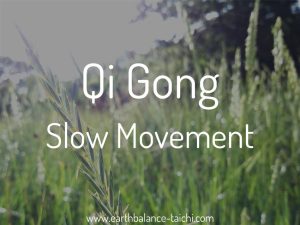
Slow Movement
Qi Gong movements are performed slowly to engage with awareness in every moment of choreography, alignment, and breath work. This helps us stay within the present moment. In those moments nothing else exists, the past, the future, the cliché is there is only now. Performing slowly means we have the space to listen inwardly to the physical feelings and sensations, observing and guiding the interactions between the body and motion, as we engage the soft tissues, loosen the joints and release tension. Moving slowly with rounded, flowing and graceful movements mimics the body language of someone at ease and in a restful state. This helps to settle the central nervous system, calming the mind and body, to become more grounded.
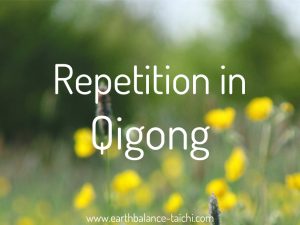
Repetition
Qigong movements are repetitive, with each move being repeated multiple times on both sides of the body, before progressing onto the next move. This creates a slow and gentle rhythm of motion which relaxes the central nervous system and helps you become grounded and centred. Repetition in Qigong can be likened to a physical version of a mantra to soothe and calm.
Breath Work
Breath work techniques are at the heart of all Qigong practice. Learn to regulate, control and sense into the breath in both stillness Qigong practices and when moving slowly. Depending on the Qi Gong routine, the pace of breath can vary, exploring circular breathing without gaps or pauses, pausing at the end of the inhale, and / or exhale, or timed breath to gongs or rhythms. Deep breathing helps to activate the relaxation response in the mind and body, moving you into the rest and digest state of being. It’s the quickest way to down regulate from the stress response.
There are a variety of breath work techniques to explore in Qigong, such as natural breathing (abdominal / relaxation breath), vase breathing, and reverse breathing (active / energetic breath). Along with more involved Taoist stillness practices (passive Qigong) like inner vessel or underwater breathing techniques (not literal). Follow along with my breath work course and find out about a variety of breathing techniques, part one can be found here.
Awareness
Developing physical and mental awareness is an important part of Qi Gong training.
Physical Awareness
Knowing where you are in space without using your eyes is a valuable tool. By using the felt sense right side of the brain, to feel into the shapes, positions, choreography with your minds eye, to control and coordinate your body movements. This develops proprioception, which is how your body holds space in an environment, and how your body position relates to the environment. Like the skill of reaching for a light switch in the dark. Body awareness helps with balance, stability and reduces the chances of falling.
Whole Body Listening
The skill of listening inwardly. Feeling through the muscles, tissues and bones as you move, and to be responsive, to stay within your soft limit, and adapt the movement to your baseline. Paying gentle attention to sensations, interactions, and listening as if you can taste, sip, smell with your whole body.
Sometimes describe as feeling into or sensing in. Not to make anything up, project a result or pretend. Feeling into what is, the tangible, the tactile and the felt sense, with a subtle curiosity to feel into what if. We approach our practice new every time, not expecting to feel something, or wanting a particular result. Instead, being in your body for the sake of being in your body, to be open to feeling into the aliveness on any given day. What does it feel like today?
Mental Presence
Staying present as you move is another awareness skill to train, to pay gentle attention, observe mental distractions and leading yourself back into awareness from distraction. This requires being in the present moment with a single point of focus, which when practised regularly, helps to lengthen your attention span and can be considered an expression of mindfulness. Mental presence also relates to how you hold your thoughts and emotions and the practice of self compassion. Read more in my article on awareness.
Intention
Intention is part of awareness and attention training in Qi Gong. Know as 'Yi' in Chinese, it is also called the intellectual mind intent, conscious thought, or being present in the moment with focused concentration. Yi applies to the physical body, the mind and the breath, awareness of everything together at the same time. The mind is the ruler of movement. It could be cognitive thinking, a conceptual idea, your creative imagination or physical exploration by doing, the mind leads all of these actions. That focus sends commands to the body to move and function in a coordinated, controlled and deliberate way.
By practising slowly you can feel your way through your 'Yi' intention and improve your quality of being. The 'Yi' intention in the body is to be aware of what the body is physically performing, whether the shape of your limbs, the coiling motion, the softening of the connective tissue etc. Regulating our posture and body movements also helps develop the mind body connection, as we can mimic the body language and movements of someone who is relaxed and at ease, and lead the mind into the same state. Read more about this in my article on deception training.
Conscious Relaxation
Known as principle “Song” and "Fang Song", this key skill relates to both mind and body. It takes a very long time to develop in the body, it is a cultivated skill that takes a lot of body sensitivity as you practice. It is developed by loosening the joints, releasing inappropriate muscular tension, suspending through the connective tissue and structure without tension, whilst relaxing and melting into the body. My teacher describes this quality perfectly as being rooted, ready, pliable, open and loose.
Conscious relaxation does not mean a floppy, soft or collapsed body. The other principles e.g. alignment, rooting, pandiculation, yin yang etc., must be present with fang song. It is also being aware, present and calm in mind. I describe this as the absence of resistance. Read more about Fang Song here.
Rooting
In Qi Gong practice, rooting and grounding is a quality of gentle hanging down, fluid heaviness, and sinking into your structure. To root your body weight down into the ground through physical action and a quality of how you hold yourself. It is part of the 'Song' principle of conscious relaxation, which again does not mean collapsed or floppy in the legs. The lower body maintains a well aligned structure whilst rooting.
In a neutral posture, the lower body from the waist down holds 60% of your body weight. The feet root into the ground like the roots of a tree. The centre of gravity is lowered as you sink into a hip / kua squat, with the ankle, knee, hip joints and lower back relaxed and loosened.
There is a balance between over-rooting and up-rootedness, finding a centred position between the two. The feet and legs will feel heavy whilst the upper body feels lighter. It is a whole body quality of sinking, hanging and rooting down, that is also paired with the spine lengthening or swimming upwards. Read more about rooting here.
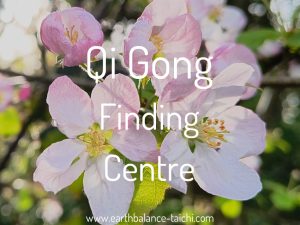
Finding Centre
To find the centre of the centre, over and over again, without finding it and being done! Whether balancing your structure between left and right, up and down, or forwards and backwards, to finding the centre within your breath. Our opening postures, wuji to taiji help explore this principle in detail, and every time you reset your alignment in between movements or when transitioning to another movement, you find centre again.
Movement Phases
A conscious exploration and balancing of Yin Yang in Qigong movements. Yang is expressed through expansive, outward, opening, reaching, and lengthening, towards the "top" of the movement. This may include an outward, positive or opening rotation /spiralling quality through the legs, limbs and torso. Yin is expressed through releasing, contracting, inward, closing, compressing, melting, withdrawing, towards the "base" of the movement. This may include an inward, negative or closing rotation /spiralling quality through the legs, limbs and torso.
Yang is also expressed through the inhale with the abdomen expanding and through Yin as the exhale when the abdomen gently releases. Through this the organs receive a deep internal massage, the connective tissue starts to elasticise and mobilise, the muscles contract and release, which helps physical tension gently to start to release and melt away. Yin Yang is also expressed through the weight changes between the legs, from the Yang "full" leg to the Yin "empty" leg.

Whole Body Coordination
One of the skills to develop within Qigong is whole body integration, where the body is connected and coordinated through the movements. This takes body regulation to train the choreography to become smooth, familiar and graceful. This needs the skill of body awareness to control your limbs and torso, whilst moving and spiralling the soft tissues from the heels of the feet to the heels of the palms in a connected way.
Part of this skill is cross lateral connectivity, moving the limbs across the centre line, performing asymmetrical movements, playing with pacing and continuity in movement and performing smooth flowing coordinated movements. This skill also coordinates breath work techniques with movement. Regulating the breath with the yin and yang phases of a movement. Whole body integrated movements takes a long time to develop, through repetition, effort, awareness and patience.
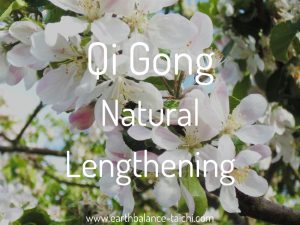
Natural Lengthening
Consider how we instinctively yawn as humans. We progressively tighten the muscles around the jaw, neck, upper back, shoulders, and upper arms, and then slowly release, relax and let go. It feels yummy and helps to release tension in the soft tissues. Yawning is similar to animal like movements, when a cat wakes up and goes through some limb stretches, pawing, up dog or down dog moves.
Both of these movements are part of pandiculation, which is the unique way we move in Qigong. It’s not stretching or pushing the body. Pandiculation is an unconscious sensory led stretch that lengthens the muscles and tissues just enough to release tension, yet not too much to create more tension. It is a natural way to lengthen through the body without force.
To develop the skill of pandiculation, we need the skill of listening inwardly, feeling through our muscles and tissues as we move, and being responsive to sensations. This takes your Qigong practice from external movements that are choreography led, and a left brain experience, into somatic movement that is awareness led, and a right brain experience.
If you have every heard the phrase noodle legs and arms from your Qigong or Tai Chi teacher, you will know that a collapsed, loose and floppy structure is not what you want to foster. Pandiculation balances between lengthening and releasing through your structure, in an elastic, rebounding, spiralling, and connected way. Lengthening your structure means to open and loosen the joints, elasticise the connective tissue, reach and lengthen to a soft limit and then rebound, all with dynamic relaxation.
Consider an expansive, connected, elastic, lengthening, rebounding, spiralling quality that expands outwards from all directions. Your structure and connective tissue have the appropriate volume as you move towards the top of a movement and as you release appropriately to the base of a movement. Like pulling an elastic band between 20% and 80% rather than 0% and 100%.
Traditional Chinese Medicine
Each movement has a connection to the theory of Traditional Chinese Medicine, whether working with the meridian channels and vessels, meridian points, to balancing yin yang, and strengthening the organs through the five element cycles. Each movement has a health preservation purpose. Working to harmonise the three treasures with the human body; Shen (spirit/mind), Qi (activity of movement/energetic), and Jing (physical/vitality/mojo).
The caveat is that the “purpose” of the movement or the “quality of Qi” should not be forced as this can cause problems. The focus during a traditional Qigong routine is to follow the principles of movement, alignment, breath work, awareness and state shifting in your practice. Avoid focusing on Qi as thing to manipulate or collect, or meridians as lines to push through. This is not where the medicine of our practice lies.
Focusing on getting a result, through anticipation or forcing / telling the body to do something in your practice keeps you within a left brain state that collects things and labels things, which is a trap. Practice with openness, curiosity and playfulness, to experience whatever you experience in a felt sense and non contrived way. Feeling into “what is” as well as a glimpse of “what if”. This approach is what truly supports health and wellbeing from a Traditional Chinese Medicine perspective. Read my article on what does Qigong mean for an understanding of Qi as a verb and not a noun.
Qi Gong Principles - Neutral Alignment
At the centre of your Qigong practice, is the standing Qigong stance, where you develop and maintain a well aligned physical structure. Your posture and structure then travels through a larger range of motion when performing a movement, returning again to an aligned standing posture. Settling back into your alignment between movements as a way to reset your structure. The following principles of alignment explore the neutral Qigong posture, known as Taiji stance / posture.
The neutral standing posture is a great way to develop your alignment whilst standing still. It can be a separate practice called Zhan Zhuang (standing like a tree), or it is used to begin and finish most Qigong movements. Follow along with my 12 step course on YouTube covering the main principles of alignment and body method here. Read more about the principles when standing in stillness here.
Knee Alignment
The knees are quite a rogue joint in the body, as they can swing and rotate wildly. It is important to learn to stabilise the knee joints when performing Qi Gong, to keep the knees safe. Aligning the knees to move in line with the hips and toes is the first thing to consider. Tight hips and a tight lower back will usually end up with the knees travelling out of alignment easily, as the student tries to mimic the instructors movements rather than working with their own physical baseline. This could be knees passed the toes, knees rolling inwards, or knees moving away from the line of the toes. Developing an aligned lower body structure is important as a beginner as your root must be solid and stable. Find out more about knee alignment here. What if your knees hurt during Qi Gong practice? Read my article on the healing process here.
Spine Alignment
In Qi Gong practice a neutral spine is maintained unless the movement requires a flexion or extension of the spine, which moves the range of motion outside of the principle. The spine is held upright, without an excess curve in the lower back, nor an excess curve in the shoulders. The spine is lengthened from the tail bone to the crown with equal and opposing pressure, which opens the vertebrae and creates space and relaxation along the spine. Read more in my article on how to hold the spine in Tai Chi and Qigong, known as principle Ding, and spine health benefits when practising Qi Gong.
Hip / Pelvis / Lower Back Alignment
The hips/pelvis and lower back are often exploited in Qi gong practice. The hips move out of alignment when they become wonky, whether over tilting forward, over tilting backwards, or over tilting to one side. Any of these posture distortions means the weight of the body gets stuck in the lower back or hips, rather than transferring to the ground. Misalignment of these joints also means the diaphragm and the pelvic floor do not align correctly, leading to problems breathing and moving well. Maintaining a neutral pelvis and lower back is the ideal, unless the Qigong movement specifically moves the hips to a greater range of motion and then returns to neutral. Find out more about the pelvis.
In Qi gong practice, the foundation movement is a kua squat. Using the hips/groin to sink the weight back/down. As opposed to a knee squat, where the knees are pushed forwards over the toes. This helps move the body through an expansion and compression motion, yang and yin. The squatting motion can be combined with the arms, torso and breath work.
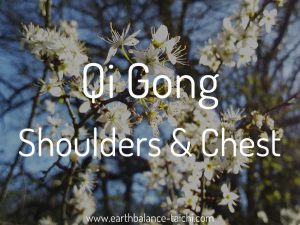
Shoulders / Chest Alignment
The shoulders and chest hold the key to the weight of your body being able to route appropriately. If the shoulders and chest are misaligned then the weight will get stuck in your neck, shoulders or back and not transfer to the ground. The shoulder joints in particular, as a major joint in the body can hold a lot of physical tension that can restrict movement. It is typical to see students wearing their shoulders as earrings in class or rounding and collapsing their shoulder crest forwards. All from carrying all of their stress around in these parts of their body.
Part of the principle song is to relax inappropriate muscular tension around the shoulders and chest, to root the shoulder blades down the back with an external rotating quality, to sit the shoulder crests in a neutral posture and to release holding on in the trap muscles on the tops of the shoulders. Whenever the arms raise is an opportunity to develop song shoulders, a skill worth the effort to reduce tension and discomfort. Some movements require the shoulder blade and/or the trap muscles to raise up in an unnatural way, once you have travelled through a larger range of motion, return to a neutral shoulder alignment.
The Five Stems Video Course
Interested to know more about Qigong? Learn about the five stems of traditional learning here. Join my FREE five day mini video course available to newsletter subscribers via this link.
* Qi Gong Principles - Please speak with your doctor prior to starting a new exercise programme. This article is for information purposes only and must not be taken as medical advice. *

